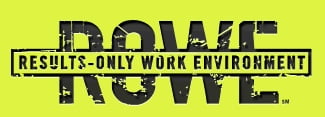Smartphones, laptops, tablets and cloud computing have made it easy for staff to work remotely, whether it’s from a hotel room during a business conference or home working on a regular basis. As the manager of remote team members, it presents a new challenge: finding the best way to manage remote performance.
Fintan O’ Toole, Director of The HR Dept believes that trust is essential when you’re taking on remote working staff. “Allowing people to work remotely gives businesses access to a talent pool who may relish the opportunity to have a flexible working arrangement,” he explained, “but underpinning this is the implied term of mutual trust and confidence and this is particularly important in a remote relationship.”
Communication is vital
The tools need to be in place to enable connection and communication, so decide from the start what tools you will use to keep in touch, then draw up a set of guidelines to cover how and when you’ll communicate. You could make it an agreement that teams will always communicate via Skype and remain logged in during working hours. Foster a sense of team work by arranging regular virtual meetings with teams and one on ones.
Measure performance
Measuring performance is critical, but it’s not as simple as making sure everybody’s logged on by 9 am. Remote workers can feel as if they have to ‘prove themselves’ because they can’t be seen to be working like office-based colleagues. Overcome this by setting clear goals and deadlines, by which performance can be measured, and resisting the urge to check up on them repeatedly.
Fintan O’ Toole agrees. “IT solutions showing when an individual is logged in can help verify that someone is at work, but the employer and remote team member should agree the deliverables in a way that can be measured and therefore managed.”
Treat remote workers like part of the team
When you’re managing a remote worker or team, it’s essential to show that you value their opinions and get them on board with company values and goals. If a remote staff member feels like part of the company, he’s more likely to put in the effort required to drive company results.
Involve remote workers by holding virtual meetings and giving them an input into projects at the start. If possible, create mixed teams of remote and office-based staff, encouraging them to communicate and work together. Making your remote workers feel as if they are part of a bigger team or organisation will encourage them to put in the effort.


Results-Only Working
In 2003, US retail company Best Buy gave its human resources managers the task of coming up with a way to get head office staff working more productively. Flexitime was one option they explored, but they found that not many staff members actually wanted flexible hours. What they found was that giving staff complete freedom to pursue results while managing their own time motivated them more than anything.
Cali Ressler and Jody Thompson devised the Results-Only Working Environment (ROWE) where all employees are evaluated solely on their performance, not their presence. This had the effect of raising morale and engagement. Staff no longer had to just ‘show up’ – so time-wasting was reduced and company productivity soared by 35%.
Not all businesses are suited to ROWE and being a hands-off manager can be difficult if you’re used to monitoring staff constantly. You can find free guides at: http://www.gorowe.com/




